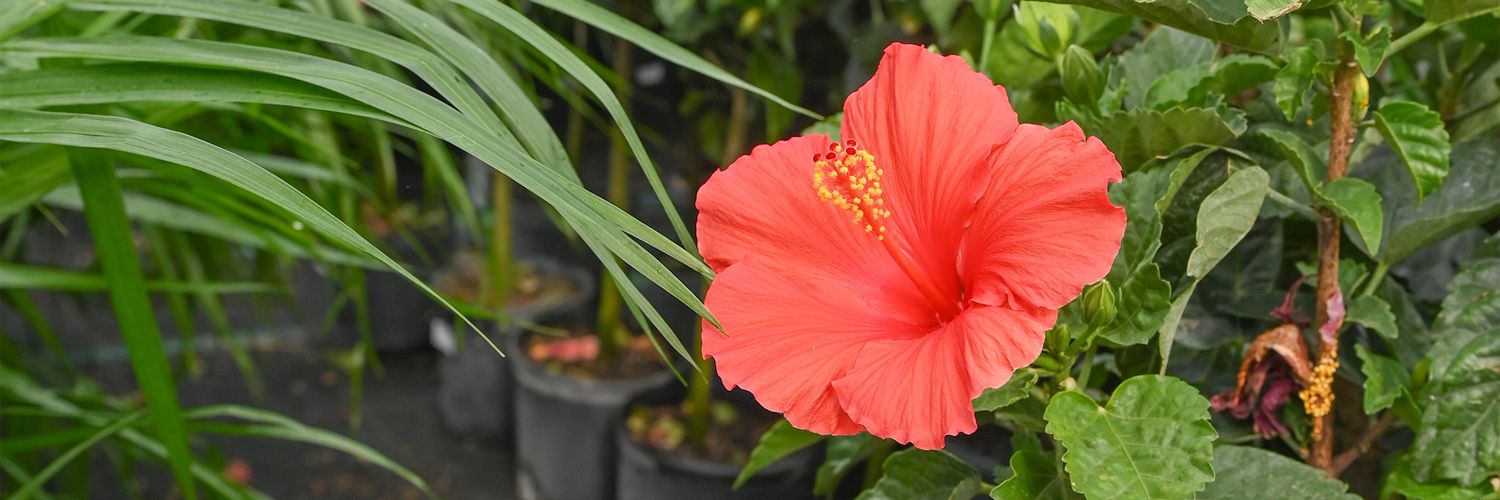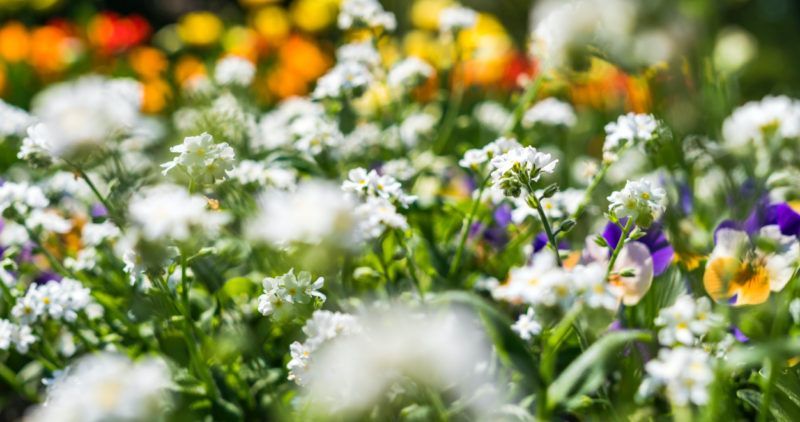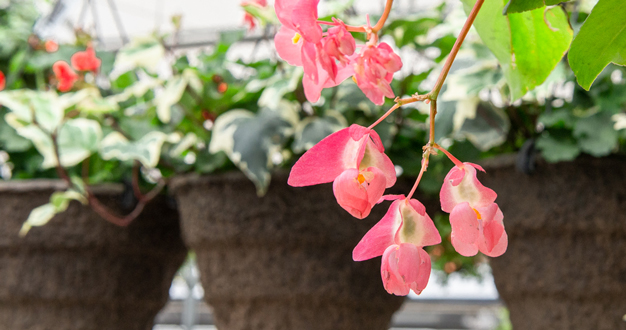
As summer approaches, our patio becomes the go-to spot for evening dinners, a relaxing afternoon with a good book, or pleasant conversation with friends. And as we know, plants make any space – indoors or out – a more enjoyable and healthy place to be. On the patio, plants cool us, inspire us, and entertain us as they draw in hummingbirds and butterflies to visit too. But which of the wide selection of beautiful foliage and flowering plants should you choose for your patio and why?
Questions to Help You Get Started
Patio plants can be as large as an eight-foot palm or as tiny as a sweet succulent in a tabletop planter. They can be refreshingly simple in shades of soothing green foliage – or they can burst with intense variegation and colorful blooms. Some like sun while some like shade, and some stand upright while others spread wide. The variety can be eye-popping, but by answering a few questions about your goals for your patio, you can narrow the choices down pretty quickly.
What Will Your Plant Do?
The first step is to decide the purpose for your patio plant – what would you like it to do? Just like in landscape design, form follows function in patio plants, so the answer to this question will help you determine the height, size, and type of plant you’re looking for.
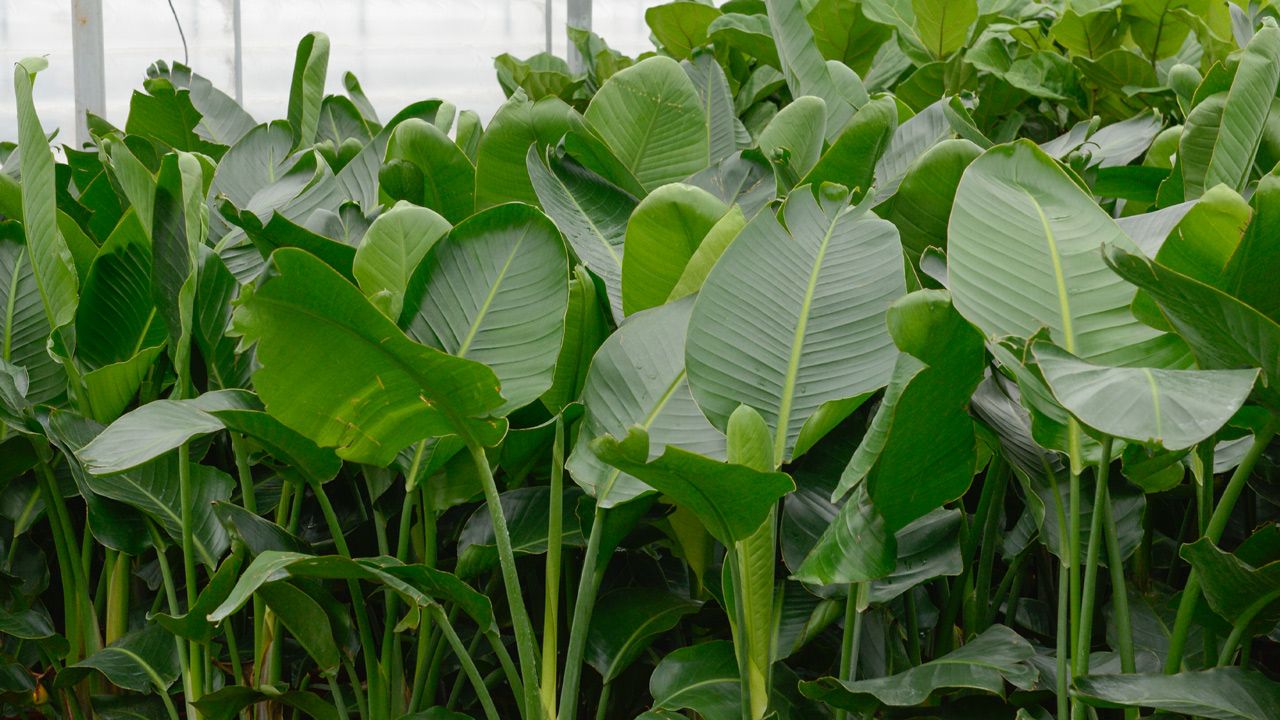
To create shade, look for a tall, leafy statement plant – like a tall palm, fiddle leaf fig, dracaena, alocasia, or bird of paradise.
To spur conversation between chairs in a seating area, consider something with interesting colors and textures like a croton, mandevilla, plumbago, hibiscus, or ti plant.
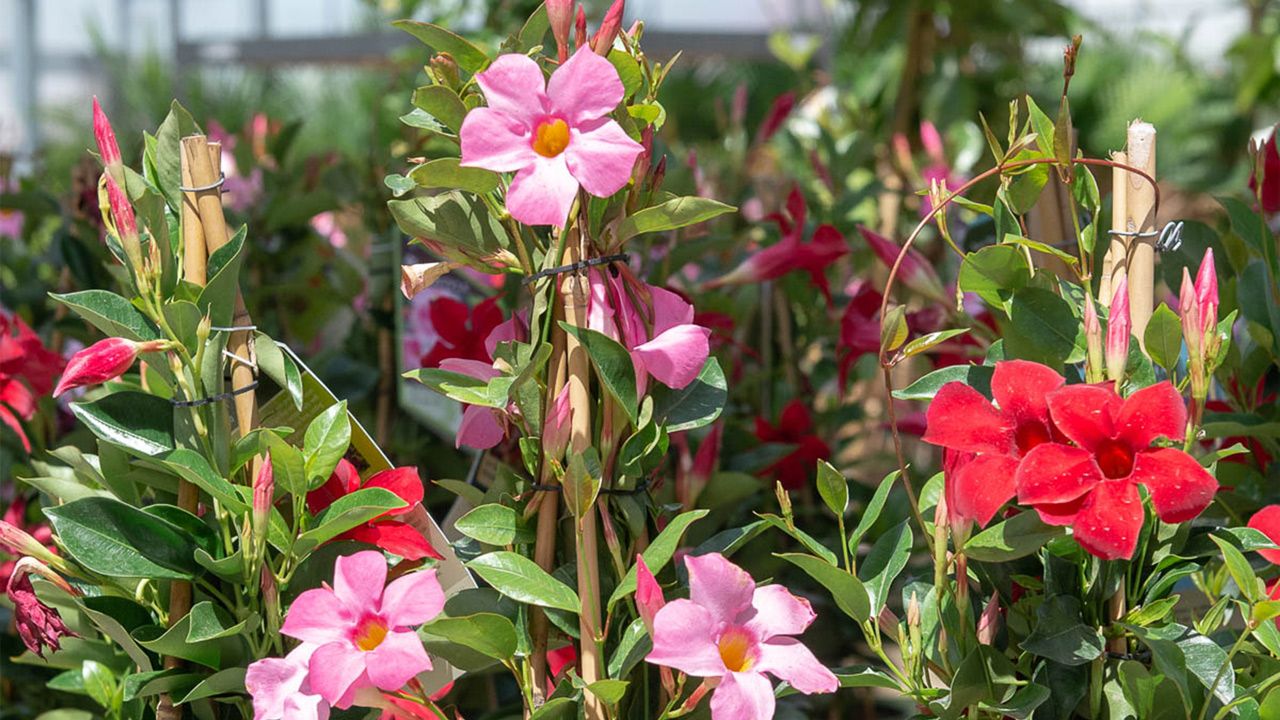
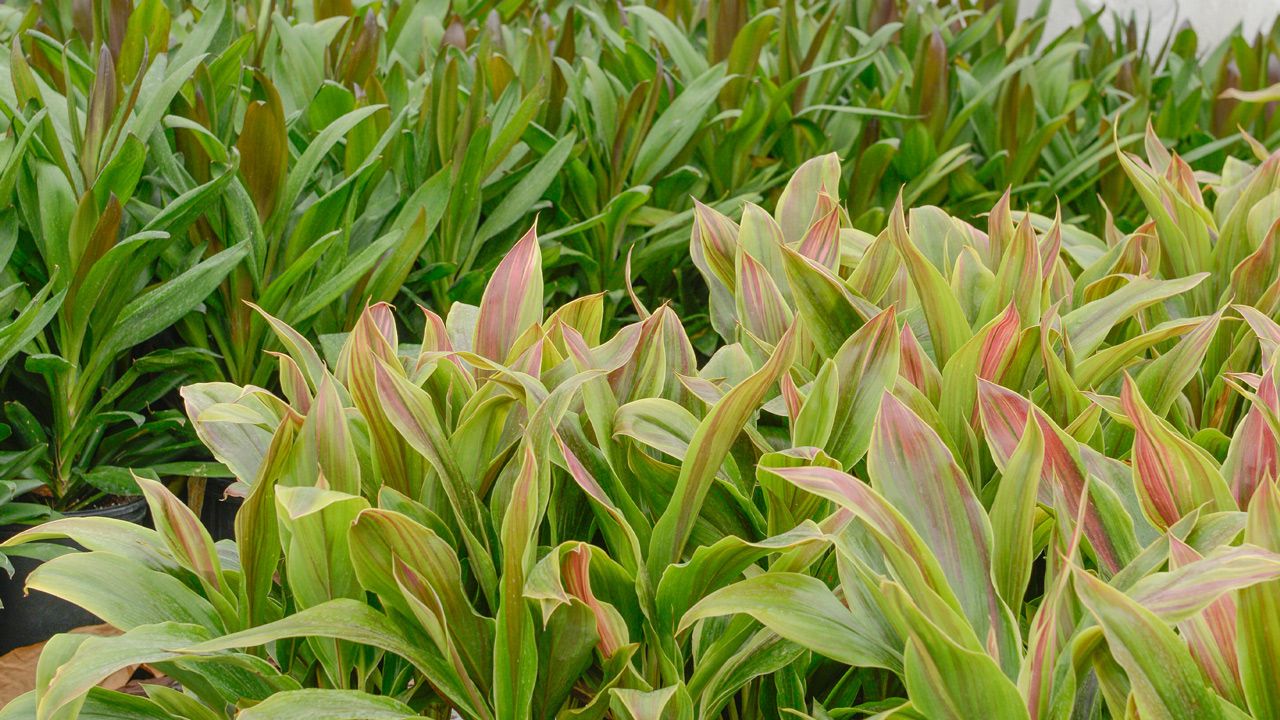
To create a more intimate space, add a living curtain with a row of hanging baskets – ferns and trailing Algerian ivy are a couple favorites. And a large Kimberly Queen fern or sansevieria on the floor, a stand, or a table, can help soften the transition between seating areas.
To create a focal point, add a centerpiece for the entire scene. You might plant a lush container full of flowering annuals with another show-stopping plant for height in the center – like a triangle palm, daisy bush, hibiscus, bougainvillea, canna, monstera, or cordyline.
Blooms or Foliage?
Patio plants can be divided into two main groups – those that bloom and those whose beauty is in their foliage. Whether you choose a flowering plant or a foliage plant for your patio depends a lot on your personal preference and the environment you want to create around your patio space.

Foliage plants typically come in shades of green, sometimes with white or yellow variegation. This natural palette is simple and relaxing and supports both traditional and contemporary themes. Neutral greens are also perfect backdrops for mixed arrangements of blooming annuals and other tropical plants. In contrast, there are foliage plants – like croton, caladium, and ti plant – that are so colorful, they even outcompete flowers for attention. Whatever their shade or pattern, foliage plants tend to prefer areas with part sun to bright shade – too much direct sun can scorch their leaves.
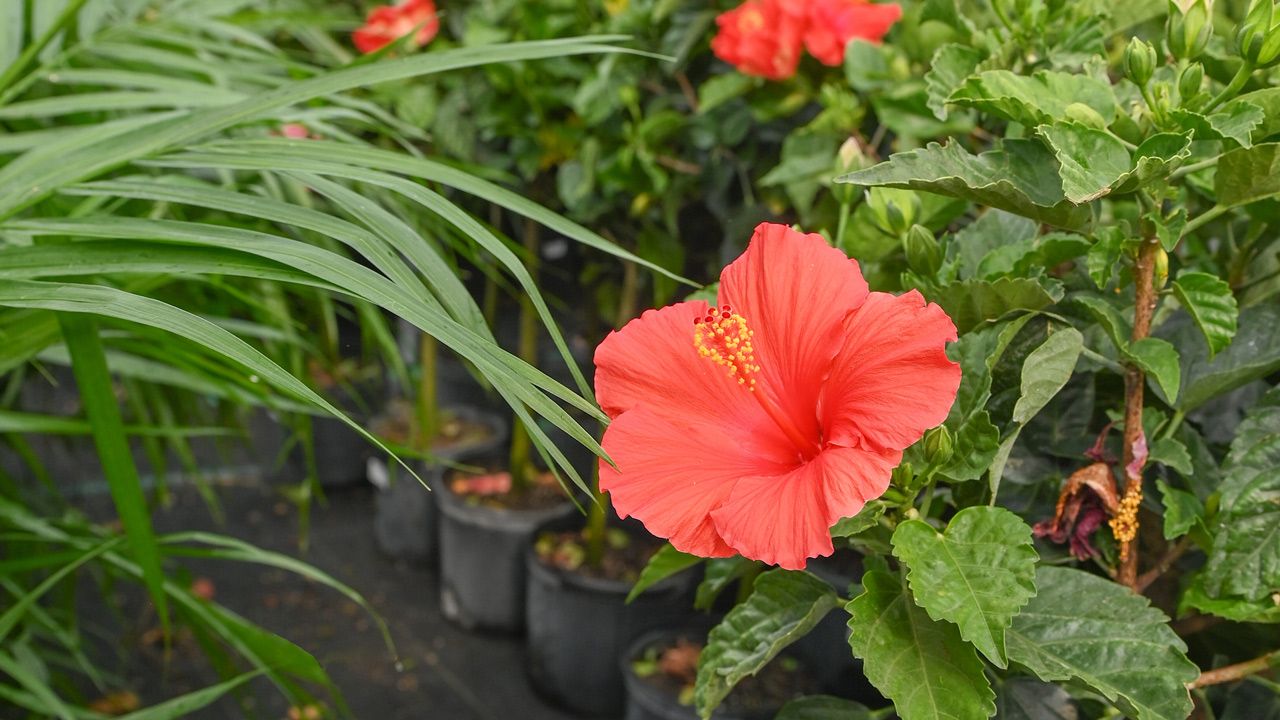
If you’re looking for colorful flowers though, remember that blooming patio plants tend to require more sun than a typical foliage plant. To create the perfect staycation getaway, you might look for large blooms in jewel-tone colors like the saucer-shaped hibiscus, the deep red, trumpet-shaped blooms on a climbing mandevilla, or the frilly, citrus-colored flowers of a canna lily. Or if a peaceful cottage garden is more your style, a soft blue plumbago, a richly scented gardenia, or a purplish lantana bush would be perfect.
Care Tips
Tropical plants thrive in the warmth, humidity, and fresh air of summer, but caring for your plants outdoors is a little different than indoors.
Light
A patio plant will grow, bloom, and look its best when it gets the level of light it prefers, whether that’s full sun, part sun, or bright shade. Most foliage plants prefer bright, indirect light – meaning four or fewer hours of direct sun per day. Most blooming plants, however, require more direct sun – possibly eight hours or more. But there are some exceptions, so if you’re not sure, just ask our team in the Greenhouse!
Container + Potting Mix
If you repot your patio plant before setting it out on your patio, choose a new container that’s no more than a couple inches wider than the old pot. Use a professional potting mix designed for container plants, and make sure the container has good drain holes to let excess water drain away quickly.

Water
Outdoor potted plants tend to dry out quickly in the summer and need regular water. It’s a good idea to check the potting mix daily, and when the surface is dry to the touch, water the plant thoroughly until the entire root system is moist and you see excess water drain from the bottom of the pot.
Fertilizer
Summer is the big-time growing season for most plants. Feed all that lush foliage and beautiful blooms with regular applications of a water-soluble fertilizer, or mix a slow-release fertilizer into the potting mix when you first pot the plant.
Temperature
Many of our favorite patio plants come from warm, tropical areas and can be sensitive to cold. So, be sure nighttime temperatures stay consistently above fifty degrees before setting your patio plants outside. And when temperatures begin to dip again as summer ends, it’ll be time to start the process of moving your patio plants inside for the winter. In general, foliage plants that prefer part sun to shade outside – like fern, philodendron, ficus, sansevieria, dracaena – do well as houseplants in the lower light of our indoor spaces.
Fill Your Patio with Life
Plants add so much value to our world wherever they are, and our patio spaces are no exception. Our Greenhouse is filled with lush foliage and blooms, ready to fill your patio with color and life. If you’re not sure which ones to choose, just ask. We’re always here to help.

